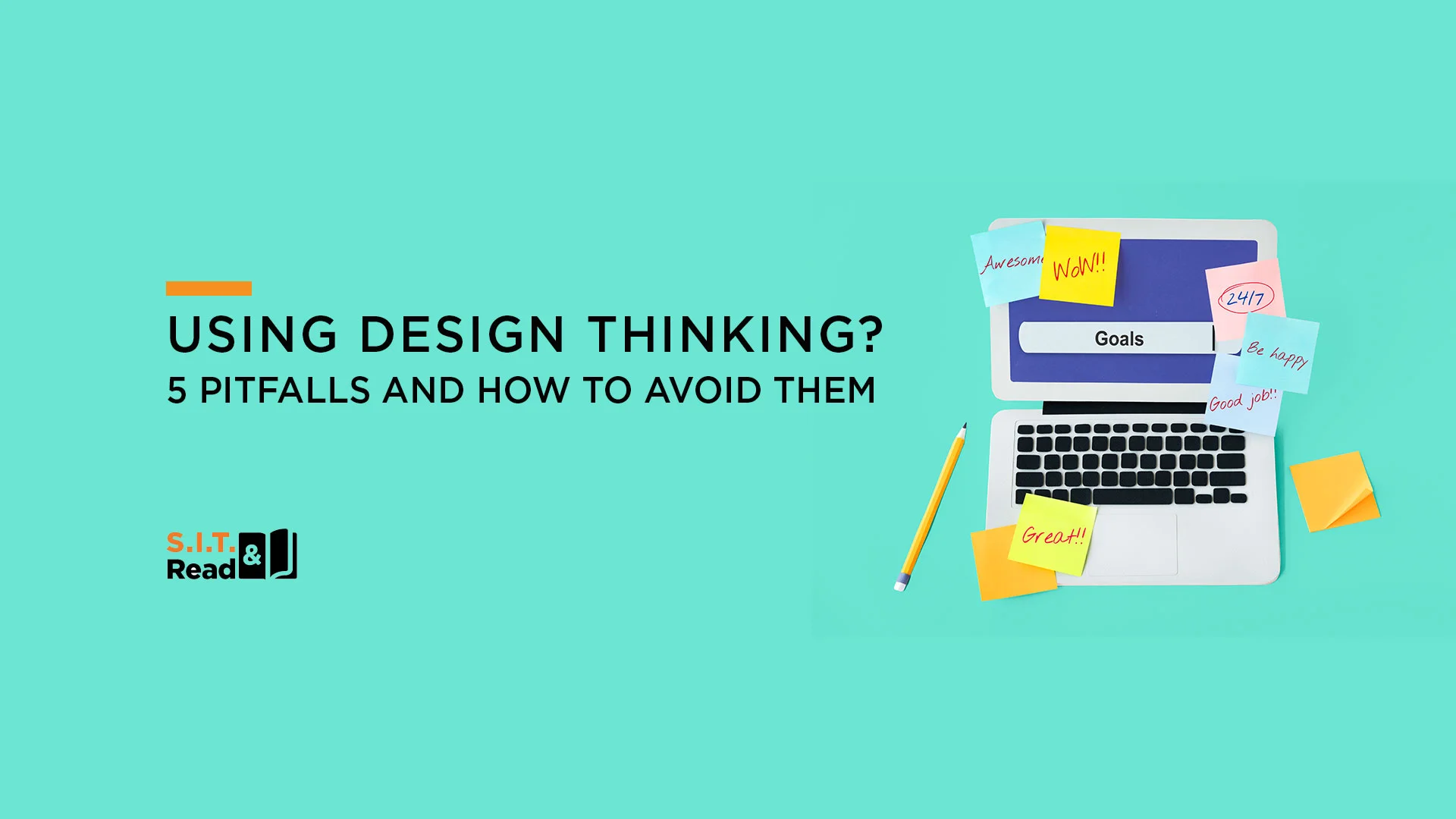USING DESIGN THINKING? 5 PITFALLS AND HOW TO AVOID THEM


Most versions of DT have these components:
1) Empathize 2) Define 3) Ideate 4) Prototype 5) Test
A key benefit of DT is that it is a full process. Embrace it to structure some innovation activities, BUT beware, while parts of the process are highly conducive to innovation, others are useless or even harmful. These are 5 major pitfalls, and the corresponding advice on how to avoid them:
1) WARNING: The crucial flaw of DT is in stage 3 – Ideation. You are required to create ideas, based on insights and observations, which you then proceed to prototype and test. But HOW do you come up with these ideas? DT doesn’t provide any tools beyond variants of Brainstorming, which do not work.
1) TO DO: Embed a structured method for breaking fixedness for stage 3. (We obviously recommend our method – SIT – but others can serve as well, provided that they are not BS variants).
2) WARNING: DT assumes that you first conduct ethnography and insight-hunting and relegates the “creative bits” to the next phase. Mistake! If you search for insights without first breaking fixedness you are searching with blinders and will rarely find novelty.
2) TO DO: Combine ethnography with tools for challenging assumptions. You’ll be surprised at the results.
3) WARNING: DT assumes that creativity and ideas are needed only until the end of stage 3. In reality, even more creativity is needed in adapting your ideas to reality, overcoming emerging challenges and selling your ideas internally (stages 4-5 and beyond).
3) TO DO: Build in problem-solving sessions and fixedness breaking exercises into prototyping and testing.
4) WARNING: Designers do great stuff and have a cool job. But it’s their job. Not yours. What sense does it make to try to think “like a designer” if you’re not one? Doctors save lives, farmers grow food – lots of professions do useful stuff, but what has that got to do with your task as innovators?
4) TO DO: Don’t try to emulate designers. Stick to your professional knowledge and use robust techniques for challenging your concepts and breaking your fixed ways of seeing. Use methods that work, not stuff that’s “cool”.
5) WARNING: “Having fun” is a distraction. It’s cotton candy. Innovation requires challenging one’s thinking. When done properly – it’s painful.
5) TO DO: People can and should enjoy innovation sessions, as you enjoy a tough workout in a gym, or a 5-mile run. Spend minimum time and efforts on getting people to have fun, just enough so they are motivated to collaborate until deeper satisfaction emerges from feeling the results of one’s hard work.
In sum: DT has powerful features and serious bugs. Pick carefully from the former while avoiding the latter.
More on Design Thinking: https://www.linkedin.com/feed/update/urn:li:ugcPost:6777325214293405696?updateEntityUrn=urn%3Ali%3Afs_updateV2%3A%28urn%3Ali%3AugcPost%3A6777325214293405696%2CFEED_DETAIL%2CEMPTY%2CDEFAULT%2Cfalse%29
Recent Posts
Innovation Behavior
Innovation is a skill, not a gift. Top organizations drive growth by nurturing and investing…
Should you learn TRIZ? – Yes. ….and No.
Are you in the world of problem solving? Is problem solving a skillset you have…
What Lies Ahead in 2024?
5 Data-Driven, Customer-Centric trends we’ve identified This is not just another conventional forecast. Over nearly…
Fork or Chopsticks – Which Innovation Tools Do You Use?
Imagine a chef, who only uses a spoon. Imagine a dentist, who only uses a…
The Moat Mentality: Exploring New Frontiers in Innovation Methodologies
In investing and business strategy, we often speak in terms of moats. Warren Edward Buffett…
Was it a Breakthrough or an Adjacency?
This year, P&G’s Febreze celebrates its silver anniversary as a brand. But not all 25…


